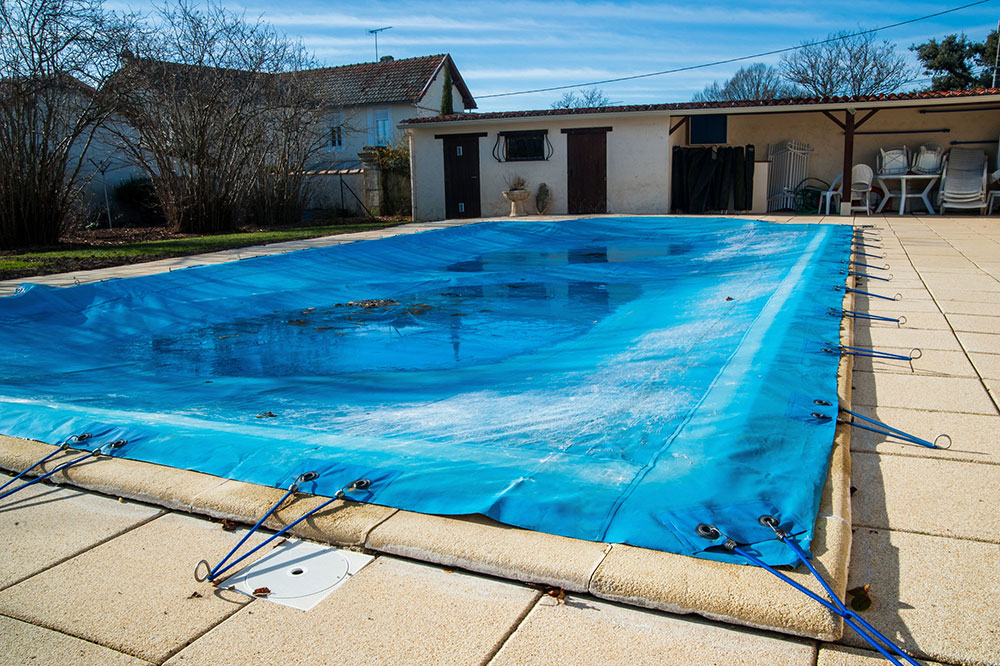As the temperatures begin to drop, it’s essential for pool owners in cooler climates to start thinking about winterizing their pools. Proper timing is crucial to prevent damage caused by freezing temperatures and to ensure the pool remains in good condition throughout the winter. Here’s a guide on when to schedule your pool winterization and the key factors to consider.
1. Water Temperature Below 65°F (18°C)
The first indicator that it’s time to winterize your pool is when the water temperature consistently drops below 65°F (18°C). At this temperature, algae growth significantly slows down, making it easier to maintain water clarity and cleanliness. Winterizing too early, when the water is still warm, can lead to issues with algae and bacteria, as these organisms thrive in warmer conditions.
2. Before Nighttime Temperatures Fall Below 30°F (-1°C)
It’s crucial to complete the winterization process before nighttime temperatures consistently fall below 30°F (-1°C). At this point, the risk of water in the pool’s plumbing and equipment freezing becomes a significant concern. Frozen water can expand and cause cracks in pipes, filters, and other equipment, leading to costly repairs. Therefore, scheduling the winterization before freezing temperatures occur is vital for protecting your investment.
3. Regional Considerations
The exact timing for winterizing your pool can vary depending on your region. In general, scheduling the closing in September is advisable to avoid the rush and ensure the pool is properly prepared before the first frost. However, in milder climates, you may have a bit more flexibility, but it’s still important not to delay too long. Waiting until November, for instance, can be risky as unexpected cold snaps can occur.
Preparing for Winterization
Before covering your pool for the winter, it’s essential to ensure that it is clean and properly treated. This includes balancing the water chemistry, adding necessary winterizing chemicals, and thoroughly cleaning the pool to prevent algae growth and other issues. Proper preparation ensures that your pool will be easier to reopen in the spring and reduces the likelihood of encountering problems.
FAQs
1. Why is it important to wait until the water temperature drops below 65°F (18°C) before winterizing my pool?
Answer: Waiting until the water temperature drops below 65°F (18°C) helps minimize the risk of algae growth and bacterial contamination. At lower temperatures, these organisms are less active, making it easier to maintain water quality during the winter.
2. What are the risks of not winterizing my pool before nighttime temperatures drop below 30°F (-1°C)?
Answer: If the pool is not winterized before temperatures drop below freezing, any water remaining in the plumbing lines, filters, or equipment can freeze and expand. This can cause cracks and damage to the pool’s infrastructure, leading to expensive repairs.
3. Can I winterize my pool myself, or should I hire a professional?
Answer: While experienced pool owners may be able to winterize their pools themselves, hiring a professional is often recommended. Professionals have the expertise and equipment to ensure that the process is done correctly, minimizing the risk of damage and ensuring that all necessary steps are taken.
4. What should I do if I miss the ideal window for winterizing my pool?
Answer: If you’ve missed the ideal window for winterizing your pool and freezing temperatures are imminent, it’s crucial to act quickly. Lower the water level, add antifreeze to the plumbing lines, and cover the pool as soon as possible. You may also want to consult a professional for emergency winterization services.
5. Is it necessary to clean the pool before winterizing it?
Answer: Yes, it is essential to clean the pool thoroughly before winterizing. This includes removing debris, brushing the walls and floor, and ensuring the water chemistry is balanced. Proper cleaning prevents algae growth and helps maintain water quality, making it easier to reopen the pool in the spring.
Conclusion
Properly timing the winterization of your pool is crucial for protecting it from the cold winter weather. By scheduling the process once the water temperature drops below 65°F (18°C) and before nighttime temperatures fall below 30°F (-1°C), you can prevent freezing damage and ensure your pool remains in good condition. Remember to clean and treat your pool properly before closing it for the winter, and consider consulting a professional to ensure all steps are correctly followed. This preparation will make reopening your pool in the spring much smoother and more enjoyable.

